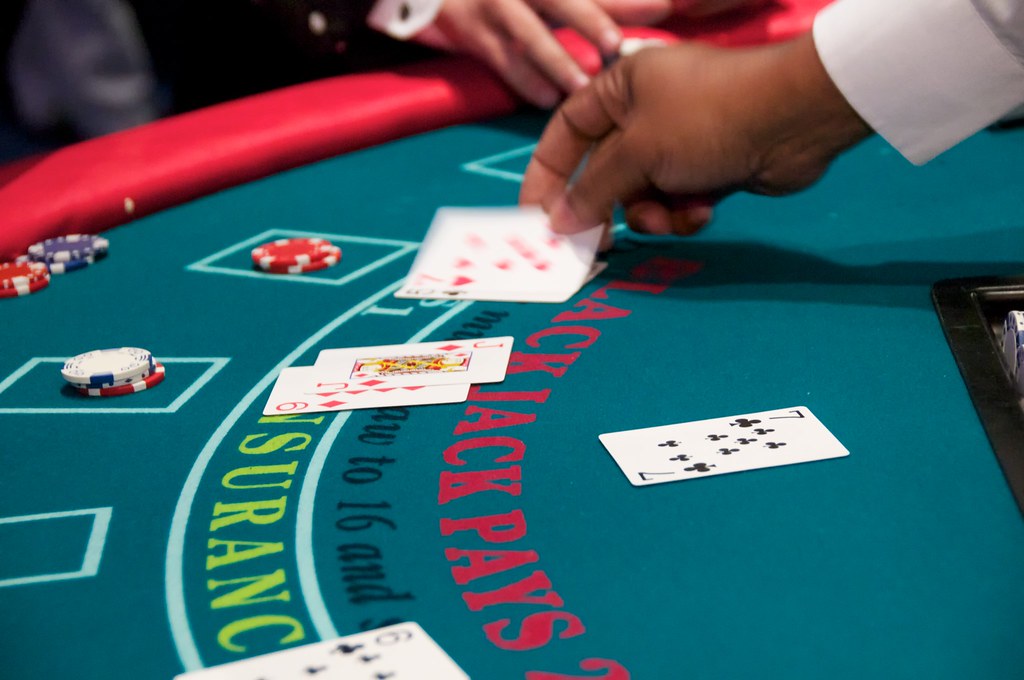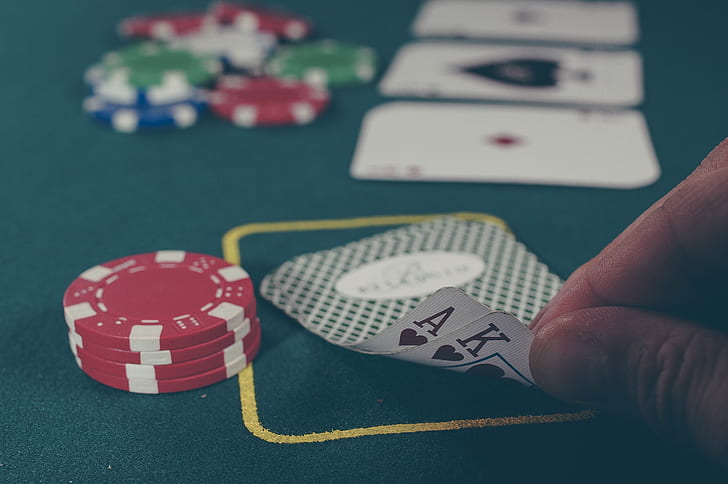Beyond the Basics: Advanced Strategies for Beating the House in Blackjack
Blackjack has long been one of the most popular casino games worldwide, captivating players with its blend of skill, strategy, and luck. Unlike many other casino games, blackjack offers players a real chance to influence the outcome through strategic decision-making. This allure has made it a favourite among casino enthusiasts, especially those who enjoy games that reward skill and knowledge.
The basic blackjack rules are simple: get a hand value closer to 21 than the dealer without going over. However, once players master the fundamentals, they often seek to elevate their game to the next level. This is where advanced strategies come into play. By delving into more sophisticated techniques, players can significantly improve their odds at $1 deposit casino NZ and reduce the house edge, transforming a game of chance into a more calculated endeavour.
Advanced blackjack strategies, such as card counting, side bets, and recognising dealer tells, require a deeper understanding of the game, as well as practice and discipline. However, when executed correctly, they can provide a substantial advantage, empowering players to not only enjoy the game more but also potentially walk away with greater winnings.
Card counting techniques: Simplified methods for beginners and advanced systems for experienced players
Card counting is perhaps the most well-known advanced strategy in blackjack. It involves keeping track of the cards that have been dealt to determine the likelihood of certain cards being dealt next. This knowledge lets players make more informed decisions, such as when to hit, stand, double down, or split. There are various card counting systems, ranging from simple methods suitable for beginners to more complex systems used by experienced players.

Simplified card counting methods
For beginners, the Hi-Lo system is a great starting point. This method assigns a value to each card: +1 for low cards (2-6), 0 for middle cards (7-9), and -1 for high cards (10-Ace). As cards are dealt, players keep a running count, adjusting their bets based on the count. A positive count indicates that more high cards remain in the deck, favouring the player, while a negative count suggests the opposite.
Hi-Lo system example:
- Cards: 2, 7, 10, 3, Ace
- Count: +1, 0, -1, +1, -1
- Running Count: +1 + 0 – 1 + 1 – 1 = 0
Another beginner-friendly method is the Knock-Out (KO) system, which is similar to Hi-Lo but does not require converting the running count to a true count. This simplification makes it easier to use, especially in single-deck games.
Advanced card counting systems
Experienced players may prefer more complex systems like the Omega II or Zen Count. These systems assign different point values to each card, providing a more nuanced understanding of the deck composition. For example, the Omega II system assigns +1 to 2, 3, and 7, +2 to 4, 5, and 6, 0 to 8 and 9, -1 to 10 and face cards, and -2 to Aces. This increased complexity can offer a more accurate count but requires more practice and mental agility.
Comparison table of card counting systems
| System | Complexity | Accuracy | Beginner-Friendly |
| Hi-Lo | Low | Moderate | Yes |
| KO | Low | Moderate | Yes |
| Omega II | High | High | No |
| Zen Count | High | High | No |
Regardless of the system used, successful card counting requires practice, concentration, and a disciplined approach to betting. It’s important to note that while card counting is legal, casinos do not welcome it and may take measures to counteract it, such as shuffling the deck more frequently or banning players suspected of counting cards.
Evaluating side bets and how they can influence your strategy
Side bets in blackjack offer players the opportunity to place additional wagers on various outcomes independent of the main game. While these bets can add excitement and the potential for higher payouts, they also come with higher house edges. Understanding when and how to use side bets effectively can enhance your overall strategy.
Common side bets
- Perfect pairs: This bet pays out if your first two cards are a pair. Payouts vary based on the type of pair (e.g., mixed, coloured, or perfect pairs).
- 21+3: This combines the player’s first two cards and the dealer’s upcard to form a three-card poker hand. Payouts depend on the strength of the poker hand (e.g., flush, straight, or three-of-a-kind).
- Insurance: Offered when the dealer’s upcard is an Ace, this bet pays 2:1 if the dealer has a blackjack.
Evaluating side bets
When considering side bets, it’s crucial to evaluate the odds and house edge. While side bets can be tempting due to their higher payouts, they generally have a higher house edge compared to the main game. For instance, the house edge for perfect pairs can be around 5-11%, and 21+3 can be 3-8%, depending on the rules and payout structures.

When to use side bets
Side bets can be strategically used in certain situations to enhance your gaming experience. Here are some guidelines:
- Bankroll management: Ensure you have a sufficient bankroll to cover side bets without affecting your primary game strategy. Side bets should be viewed as an additional wager, not a primary strategy.
- Understanding payout structures: Familiarise yourself with the specific payout structures and odds for each side bet. This knowledge helps you make informed decisions and avoid unnecessary risks.
- Occasional use for fun: Side bets can add excitement and variety to your gameplay. Use them occasionally for fun, but don’t rely on them as a consistent strategy for winning.
Recognising subtle cues that can help you predict the dealer’s hand
Recognising dealer tells in blackjack involves observing subtle cues that may indicate the dealer’s hand. While this strategy is more art than science, skilled players can gain valuable insights by paying close attention to the dealer’s behaviour and actions.
Common dealer tells
- Shuffling patterns: Some dealers may have predictable shuffling patterns that can give away the distribution of high and low cards.
- Card handling: How the dealer handles the cards can provide clues. For instance, a dealer might reveal a slight hesitation or specific mannerism when dealing certain cards.
- Facial expressions and body language: Although most dealers are trained to maintain a neutral demeanour, subtle changes in facial expressions or body language can occasionally reveal their hand strength.
Recognising dealer tells
To effectively recognise dealer tells, consider the following tips:
- Observation skills: Pay close attention to the dealer’s actions, mannerisms, and any deviations from their usual routine. Consistent observation can help identify patterns and potential tells.
- Practice and experience: Developing the ability to recognise dealer tells requires training and experience. The more you play, the better you become at noticing subtle cues.
- Focus on specific dealers: Not all dealers have tells, and those who do may not exhibit them consistently. Focus on specific dealers you encounter frequently and observe their behaviour over multiple sessions.
While dealer tells can provide an edge, it’s important to remember that they are not foolproof. Relying solely on tells without a solid fundamental strategy can lead to losses. Use them as supplementary information to enhance your overall game.
Conclusion
Advanced blackjack strategies, such as card counting, side bets, and dealer tells, offer players the opportunity to elevate their game and potentially increase their winnings. These techniques require a deeper understanding of the game, practice, and discipline, but the rewards can be substantial.
By incorporating advanced strategies into your blackjack play, you can transform a game of chance into a more calculated and engaging endeavour. Whether you’re a beginner looking to learn simplified card counting methods or an experienced player seeking to master complex systems and dealer tells, there is always room for growth and improvement.
As you explore these advanced strategies, remember that responsible gaming and bankroll management are crucial. While these techniques can enhance your chances of winning, they should be used in conjunction with a solid fundamental strategy and a disciplined approach to betting.
